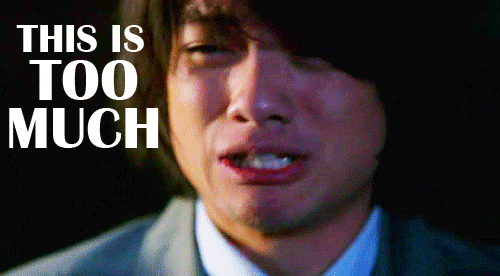Reflections on a Year of Living Dangerously
(Technologically Speaking)
(Technologically Speaking)
In October 2013, I joined a cohort of about thirty teachers in my district for an adventure in Teaching and Technology. Nine months (and 15 credits later), I am taking time to reflect on what I've acquired and consider the journey ahead.
I've always enjoyed trying new things, and I've been fortunate to work in a district where opportunities for training in technology as well as tech resources have been relatively plentiful. So, many years ago, I adopted an electronic gradebook, introduced my fourth graders to blogging, was an early user of Moodle, designed my classroom website, embraced Interwrite pads and later SMARTboards, and enthusiastically employed Google Apps. I attended summer Tech Camp sessions, enrolled in summer courses, and applied for iSquared grants to improve access to resources for my students. Even so, I knew I was barely scratching the surface of the exploding world of education technology.
The first weeks of the first class, only confirmed what I suspected. I was clearly trying to drink from a fire hose.
The amount of information as well as the number of tools, or apps, was overwhelming.
Trying to narrow the field involved seeking answers to an endless stream of questions. Which one was best suited for the project? What would work with the age, needs, and experience level of my kids? Which tools were "device agnostic"? What was safe? What was user friendly? Which had the features I needed? What lessons would I need to preteach before my students could be successful with a new tool? Did it lend itself to collaboration? Higher order thinking? Problem solving? Where did my project fall on the SAMR scale? Was it authentic? Meaningful? Worth the time it would take for me to teach it and them to learn it and do it?
The fact is, I wanted to find the perfect tools to create the perfect lessons so that my students could be perfectly successful at learning. And I was making myself crazy as I floundered about trying this and that, never quite finding "the perfect thing" that would satisfy all those desires. I didn't want to put the effort into learning to do and teach something one way, only to feel compelled to rework it all later after discovering something much better.
The Aha!
And then the moment arrived when I recognized that there was no ONE right answer for any problem or project I was working on. Instead, I had the freedom to try something and not be so worried about whether I would want to repeat it in the future, or not. Experimentation was not only an option, but a needed element of growth. Suddenly, I was no longer frozen over choosing the right tool.
Instead I dove in, trying a variety of things without fretting over whether I was making a long term commitment to them.
I still felt amazed and even overwhelmed at the possibilities, but was no longer frightened of doing it wrong.
My students joined me in exploring new tools. Sometimes they worked beautifully and we were all thrilled.
Other times, the results were mediocre
or even disappointing.
But we never felt discouraged because we had enough successes to keep us going and we were finding the process rather fun.
I actually believe that the process I have just described is one of the best things I was able to pass on to my students this year. As they joined me in this journey and partnered with me while working through new experiences in technology use, I watched them adopt a can-do, problem solving mentality. Many who were tentative when first working with our Chromebooks, for example, became comfortable with experimenting to find solutions and eagerly shared their findings with classmates encountering similar problems. Our classroom took on a decidedly relaxed, no worries attitude toward trying new things. Students participated in evaluating the tools, offering reflective assessments of the pros and cons. We found that new tools were a mixed bag. Sometimes they worked. Sometimes they didn't. We weren't upset by that, but just moved on or worked around it.
I've always felt it important that my fourth graders develop a sense of ownership regarding their education. Experimenting with technology turns out to be a valuable tool in fostering a sense of independence, responsibility, and confidence around their learning.
(All gifs were selected from giphy.com)
A Project Highlight
This year, my students used Google Presentation for a few different projects. One that I felt represented a valuable application of this app was a project we created in response to a piece of literature.
Portraits of African American Heroes, by Tonya Bolden, illustrated by Ansel Pitcairn, is a compilation of biographies highlighting the contributions of African Americans in a variety of fields. Students read about one of these important individuals in pairs. They identified the challenges or obstacles the person faced, what assets they possessed that made them successful, and what accomplishments the person achieved over his or her lifetime.
After sharing their observations and recognizing common themes among these varied individuals, students created a list of bullet points that outlined the important points of their person's story.
A couple of students helped design an introductory slide and a template in Google Presentation that would enable them to create a presentation for sharing their learning with others. Students copied the slides to add to the presentation, working on it simultaneously at first and then individually as needed.
As they crafted their slides, they could collaborate with other students and learn from what others had done, as well as ask for and receive feedback from me or their peers.
The result can be seen here.














No comments:
Post a Comment